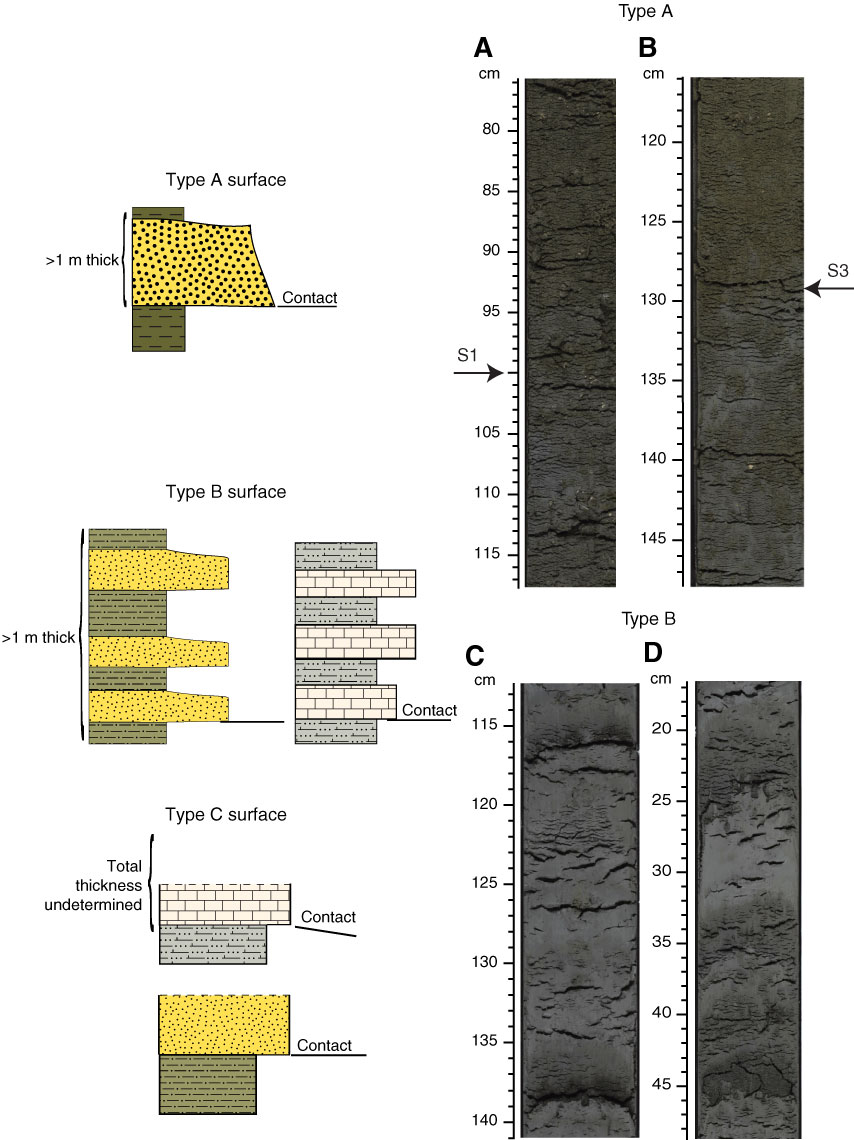
Figure F20. Core photographs and drawings of Type A, B, and C contacts and facies associations. Type A surfaces are characterized by sharp, basal contacts commonly separating two distinct lithologies below >1 m thick deposits. Type B surfaces represent amalgamation packages of >1 m thick thinly bedded (decimeter scale), distinctly contrasting lithologies (e.g., turbidites, interbedded mud and clay, and well-cemented marlstone/chalk) with sharp basal contacts. Type C surfaces are always sharp and separate contrasting lithologies such as sand and mud or marlstone and chalk. However, the total thickness of beds associated with these contacts could not be clearly delineated on board ship. A. Surface U1352B-S1 (interval 317-U1352B-7H-6, 76–118 cm). Shells are present, and extensive bioturbation occurs beneath the contact. B. Surface U1352B-S3 (interval 317-U1352B-23H-1, 116–148 cm). Heavy bioturbation occurs beneath the contact. C. Thinly bedded (1–2 cm thick) sand beds and mud interval (interval 317-U1352B-3H-4, 113–140 cm). D. Very fine grained, well-sorted, quartz-rich sand beds (2–5 cm thick) (interval 317-U1352B-2H-6, 17–48 cm).

Previous | Close | Next | Top of page